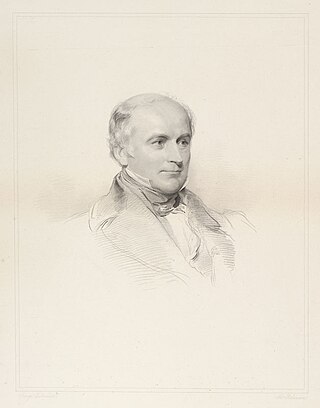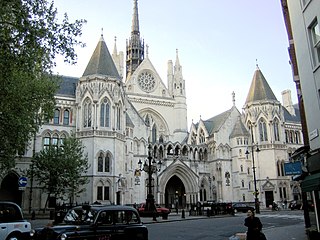
A trust is a legal relationship in which the owner of property, or any transferable right, gives it to another to manage and use solely for the benefit of a designated person. In the English common law, the party who entrusts the property is known as the "settlor", the party to whom it is entrusted is known as the "trustee", the party for whose benefit the property is entrusted is known as the "beneficiary", and the entrusted property is known as the "corpus" or "trust property". A testamentary trust is an irrevocable trust established and funded pursuant to the terms of a deceased person's will. An inter vivos trust is a trust created during the settlor's life.

An honorary trust, under the law of trusts, is a device by which a person establishes a trust for which there is neither a charitable purpose, nor a private beneficiary to enforce the trust. While such a trust would normally be void for lack of a beneficiary, many jurisdictions have carved out two specific exceptions to this rule: trusts for the care of that person's pets; and trusts to provide for the maintenance of cemetery plots.
Joint wills and mutual wills are closely related terms used in the law of wills to describe two types of testamentary writing that may be executed by a married couple to ensure that their property is disposed of identically. Neither should be confused with mirror wills which means two separate, identical wills, which may or may not also be mutual wills.

A purpose trust is a type of trust which has no beneficiaries, but instead exists for advancing some non-charitable purpose of some kind. In most jurisdictions, such trusts are not enforceable outside of certain limited and anomalous exceptions, but some countries have enacted legislation specifically to promote the use of non-charitable purpose trusts. Trusts for charitable purposes are also technically purpose trusts, but they are usually referred to simply as charitable trusts. People referring to purpose trusts are usually taken to be referring to non-charitable purpose trusts.

McPhail v Doulton[1970] UKHL 1, also known as Re Baden's Deed Trusts is a leading English trusts law case by the House of Lords on the certainty of beneficiaries. It held that so long as any given claimant can clearly be determined to be a beneficiary, or not, a trust is valid. The Lords also remanded the case to the Court of Appeal to be decided on this new legal principle as Re Baden's Deed Trusts .
In trust law, a settlor is a person who settles their property for the benefit of the beneficiary. In some legal systems, a settlor is also referred to as a trustor, or occasionally, a grantor or donor. Where the trust is a testamentary trust, the settlor is usually referred to as the testator. The settlor may also be the trustee of the trust or a third party may be the trustee. In the common law of England and Wales, it has been held, controversially, that where a trustee declares an intention to transfer trust property to a trust of which he is one of several trustees, that is a valid settlement notwithstanding the property is not vested in the other trustees.

Saunders v Vautier[1841] EWHC J82, (1841) 4 Beav 115 is a leading English trusts law case. It laid down the rule of equity which provides that, if all of the beneficiaries in the trust are of adult age and under no disability, the beneficiaries may require the trustee to transfer the legal estate to them and thereby terminate the trust. The rule has been repeatedly affirmed in common law jurisdictions, and is commonly referred to as "the rule in Saunders v Vautier" for shorthand.

In the trust law of England, Australia, Canada, and other common law jurisdictions, a discretionary trust is a trust where the beneficiaries and their entitlements to the trust fund are not fixed, but are determined by the criteria set out in the trust instrument by the settlor. It is sometimes referred to as a family trust in Australia or New Zealand. Where the discretionary trust is a testamentary trust, it is common for the settlor to leave a letter of wishes for the trustees to guide them as to the settlor's wishes in the exercise of their discretion. Letters of wishes are not legally binding documents.

Allhusen v Whitell (1867) LR 4 Eq 295 is an English trusts law case which lays down a rule of equity which requires the trustee of a trust to strike a fair balance between the beneficiaries who are tenants for life and those who are remaindermen in respect of payment of the debts of an estate. The life tenant under a will is entitled to income earned after the testator's death, but it often takes some time to ascertain and settle all of those debts. In the meantime the assets of the estate are earning income for tenant for life, whereas the life tenant should only receive income from the estate net of the debts; the rule in Allhusen v White requires the life tenant to make a contribution.

English trust law concerns the protection of assets, usually when they are held by one party for another's benefit. Trusts were a creation of the English law of property and obligations, and share a subsequent history with countries across the Commonwealth and the United States. Trusts developed when claimants in property disputes were dissatisfied with the common law courts and petitioned the King for a just and equitable result. On the King's behalf, the Lord Chancellor developed a parallel justice system in the Court of Chancery, commonly referred as equity. Historically, trusts have mostly been used where people have left money in a will, or created family settlements, charities, or some types of business venture. After the Judicature Act 1873, England's courts of equity and common law were merged, and equitable principles took precedence. Today, trusts play an important role in financial investment, especially in unit trusts and in pension trusts. Although people are generally free to set the terms of trusts in any way they like, there is a growing body of legislation to protect beneficiaries or regulate the trust relationship, including the Trustee Act 1925, Trustee Investments Act 1961, Recognition of Trusts Act 1987, Financial Services and Markets Act 2000, Trustee Act 2000, Pensions Act 1995, Pensions Act 2004 and Charities Act 2011.

The three certainties compose a rule within English trusts law on the creation of express trusts that, to be valid, the trust instrument must show certainty of intention, subject matter and object. "Certainty of intention" means that it must be clear that the donor or testator wishes to create a trust; this is not dependent on any particular language used, and a trust can be created without the word "trust" being used, or even the donor knowing he is creating a trust. Since the 1950s, the courts have been more willing to conclude that there was intention to create a trust, rather than hold that the trust is void. "Certainty of subject matter" means that it must be clear what property is part of the trust. Historically the property must have been segregated from non-trust property; more recently, the courts have drawn a line between tangible and intangible assets, holding that with intangible assets there is not always a need for segregation. "Certainty of objects" means that it must be clear who the beneficiaries, or objects, are. The test for determining this differs depending on the type of trust; it can be that all beneficiaries must be individually identified, or that the trustees must be able to say with certainty, if a claimant comes before them whether; they are or are not a beneficiary.

Charitable trusts in English law are a form of express trust dedicated to charitable goals. There are various advantages to charitable trust status, including exemption from most forms of tax and freedom for the trustees not found in other types of English trusts. To be a valid charitable trust, the organization must demonstrate both a charitable purpose and a public benefit. Applicable charitable purposes are normally divided into categories for public benefit, including the relief of poverty, the promotion of education, the advancement of health and saving of lives, the promotion of religion, and all other types of trusts recognized by the law. There is also a requirement that the trust's purposes benefit the public, and not simply a group of private individuals.
In English law, a purpose trust is a trust created for the fulfillment of a purpose, not for the benefit of a person. These are normally considered invalid by the courts because they have no legally recognized beneficiaries, therefore nobody to enforce the trust, with the exception of charitable trusts, which are enforceable by the Attorney General as they represent the public interest. As well as charitable trusts, there are several exceptions to the rule against purpose trusts. If the requirement to fulfill a purpose is a request, rather than an obligation, the trust is valid; a trust will also be found valid if, while being for a purpose, it involves beneficiaries in some respect. Purpose trusts can also be valid if they are for the erection or maintenance of tombs and memorials, the maintenance of animals, and arguably the saying of masses, although these must all obey the rule against perpetuities and not continue for more than 21 years after the testator's death.
In English law, secret trusts are a class of trust defined as an arrangement between a testator and a trustee, made to come into force after death, that aims to benefit a person without having been written in a formal will. The property is given to the trustee in the will, and he would then be expected to pass it on to the real beneficiary. For these to be valid, the person seeking to enforce the trust must prove that the testator intended to form a trust, that this intention was communicated to the trustee, and that the trustee accepted his office. There are two types of secret trust — fully secret and half-secret. A fully secret trust is one with no mention in the will whatsoever. In the case of a half-secret trust, the face of the will names the trustee as trustee, but does not give the trust's terms, including the beneficiary. The most important difference lies in communication of the trust: the terms of a half-secret trust must be communicated to the trustee before the execution of the will, whereas in the case of a fully secret trust the terms may be communicated after the execution of the will, as long as this is before the testator's death.
Re Barlow's Will Trusts [1979] 1 WLR 278 is an English trusts law case, concerning certainty of the words "family" and "friends" in a will.
The beneficiary principle is a policy of English trusts law, and trusts in Commonwealth jurisdictions, that trusts which do not have charitable objects, as under the UK Charities Act 2006 sections 2 and 3, and also do not make the trust property available for the benefit of defined people, are void.
Morice v Bishop of Durham [1805] EWHC Ch J80 is an English trusts law case, concerning the policy of the beneficiary principle.

Re Denley’s Trust Deed [1969] 1 Ch 373 is an English trusts law case, concerning the policy of the "beneficiary principle". It held that so long as the people benefitting from a trust can at least be said to have a direct and tangible interest, so as to have the locus standi to enforce a trust, it would be valid.
Unincorporated associations are one vehicle for people to cooperate towards a common goal.

Re Astor’s Settlement Trusts [1952] Ch 534 is an English trusts law case, concerning the principle that non-charitable trusts must be for beneficiaries and not abstract purposes.







